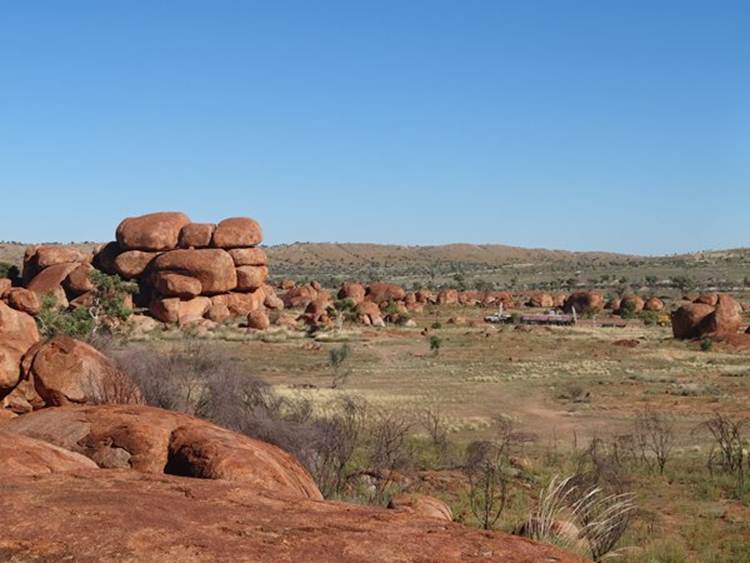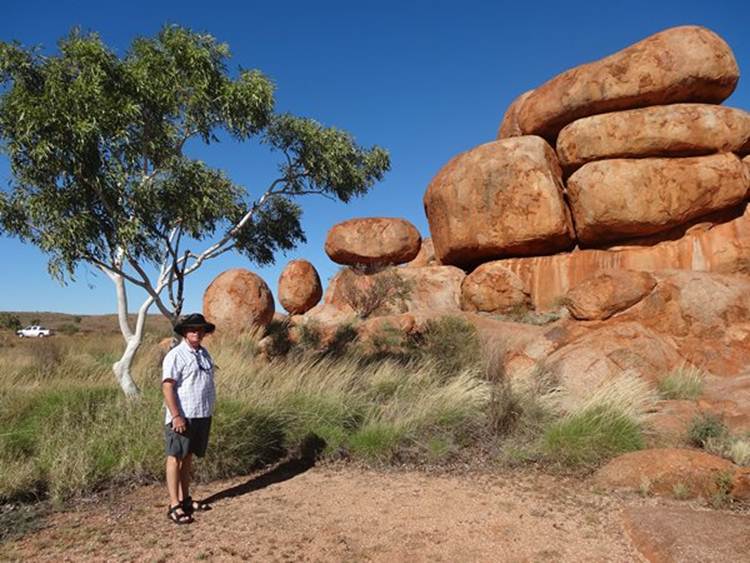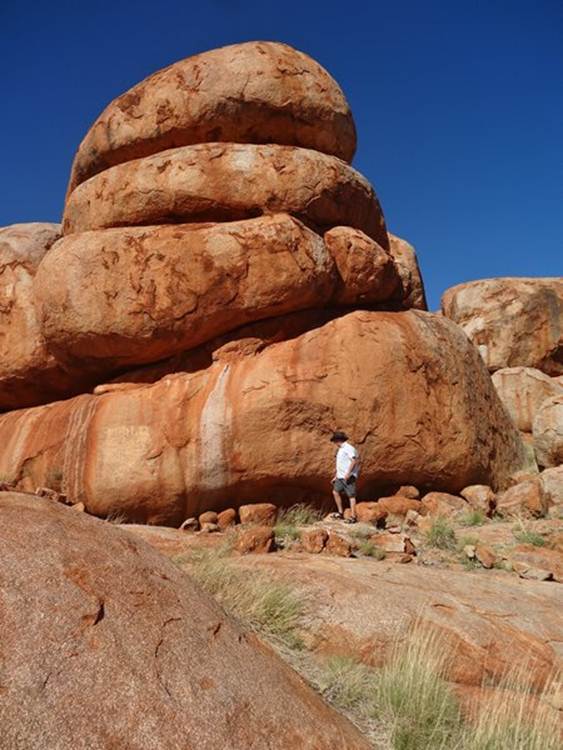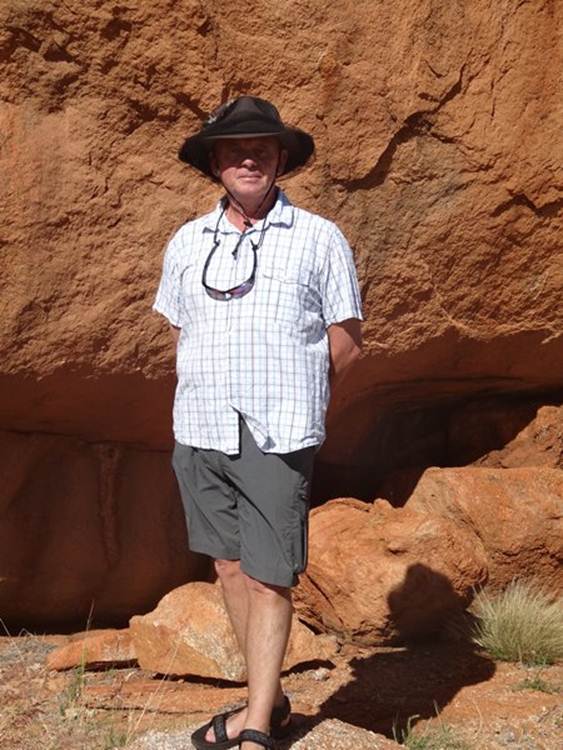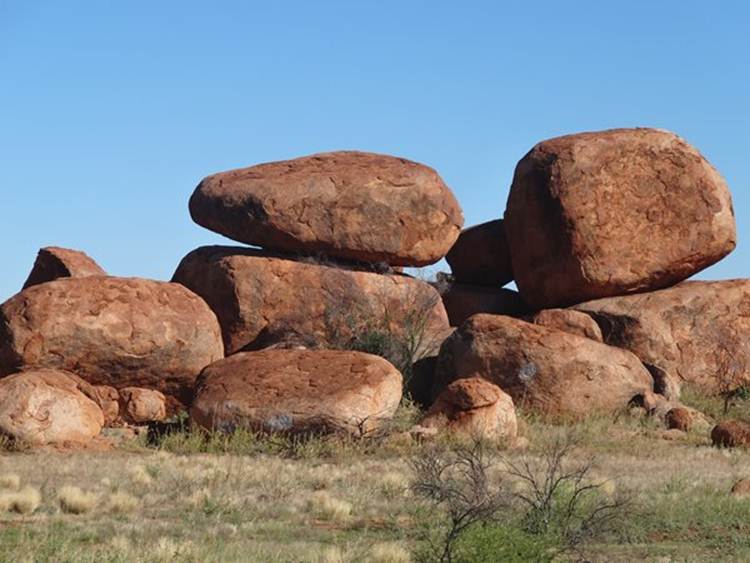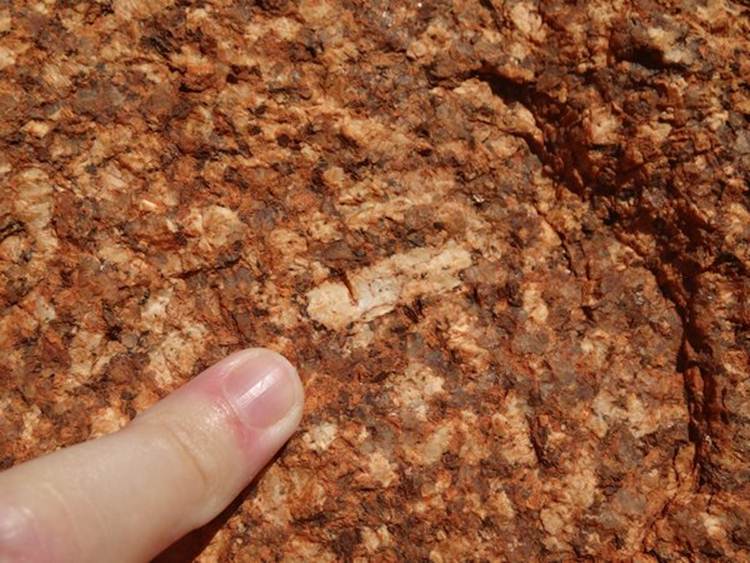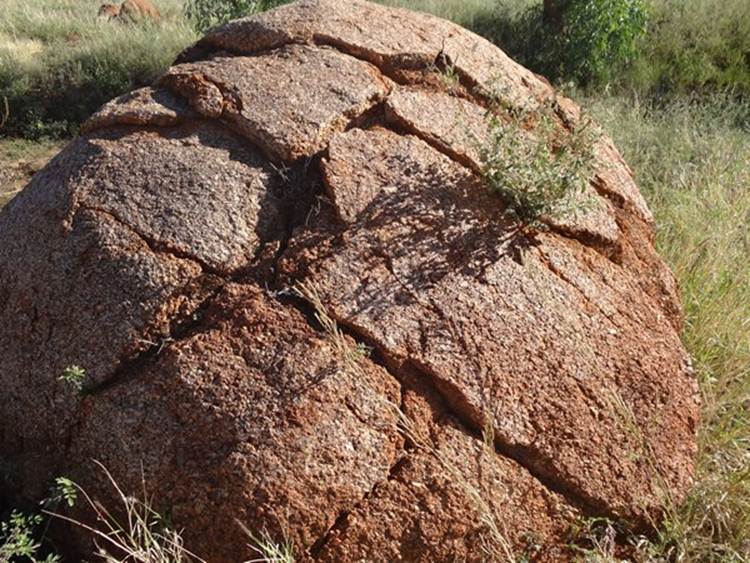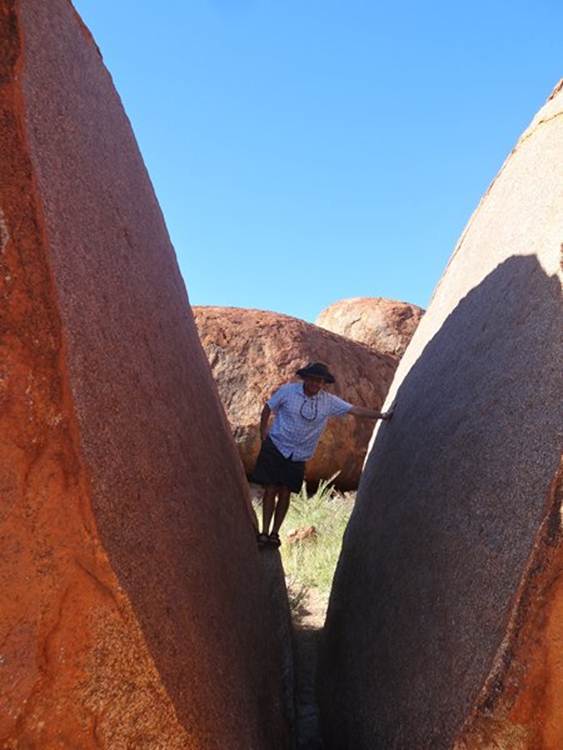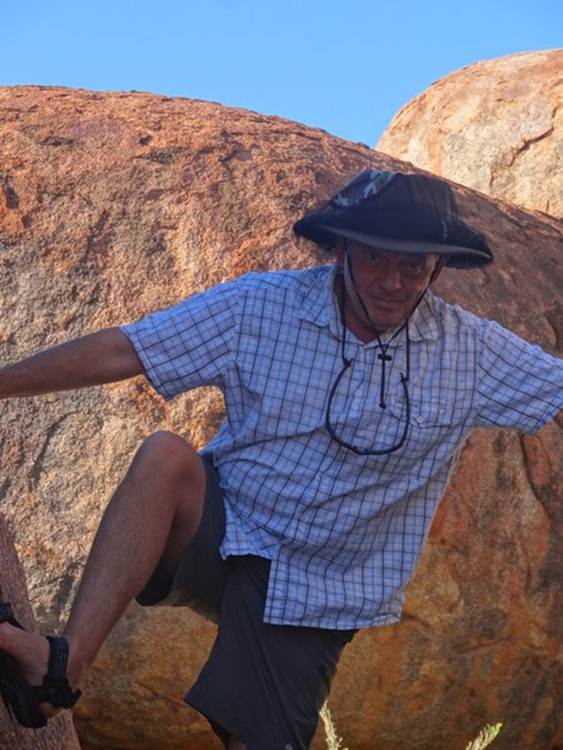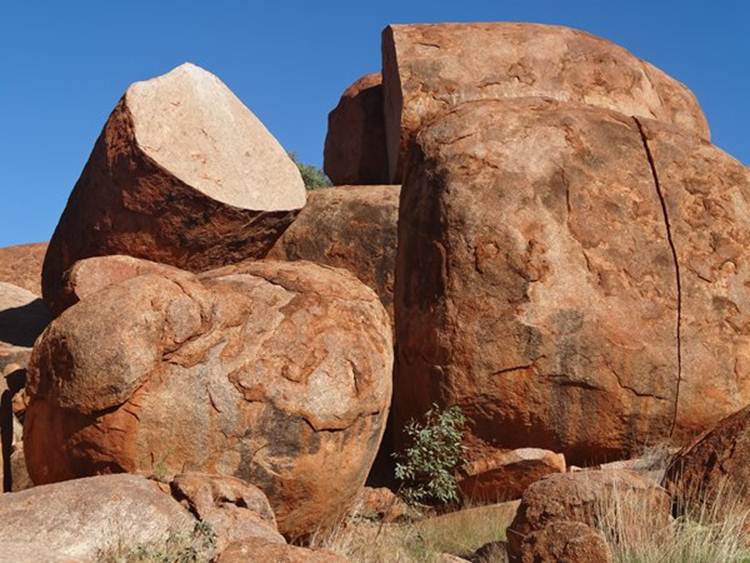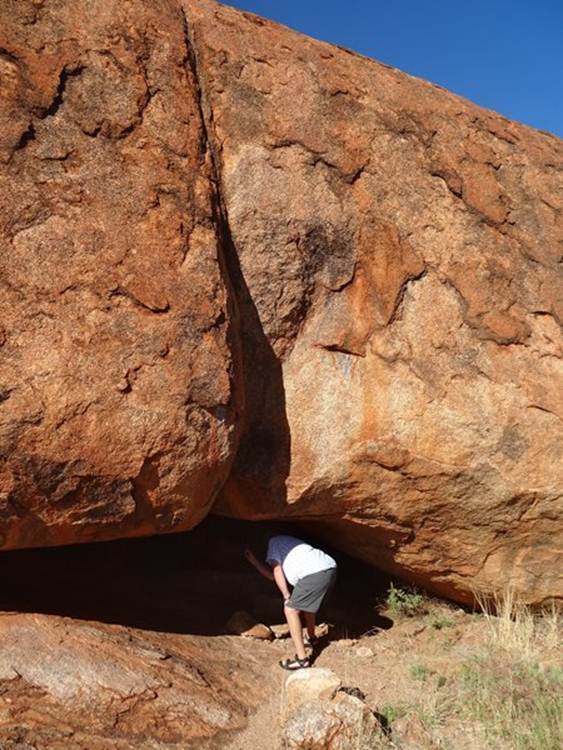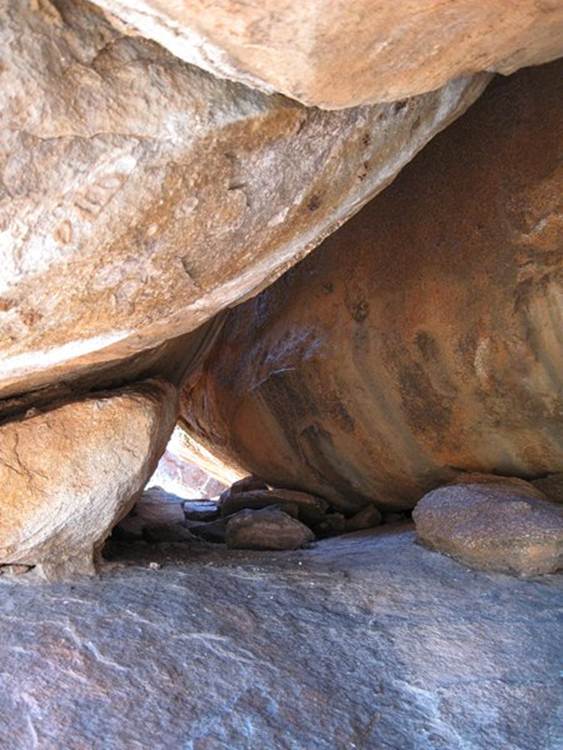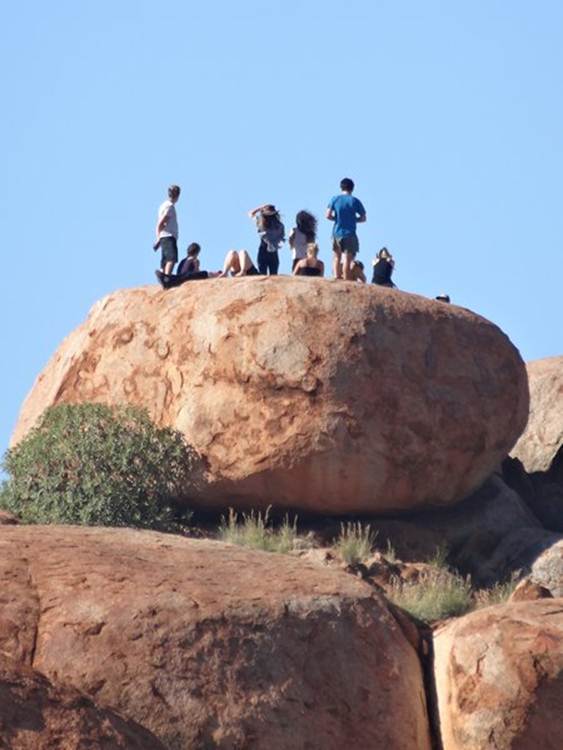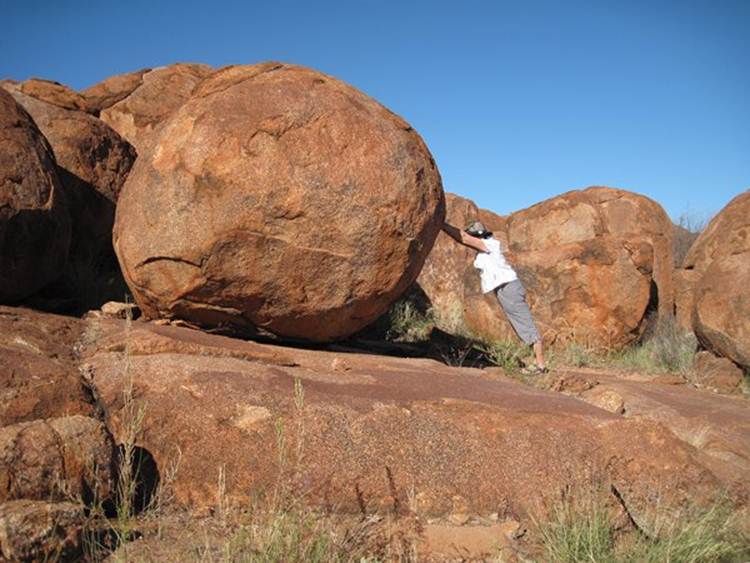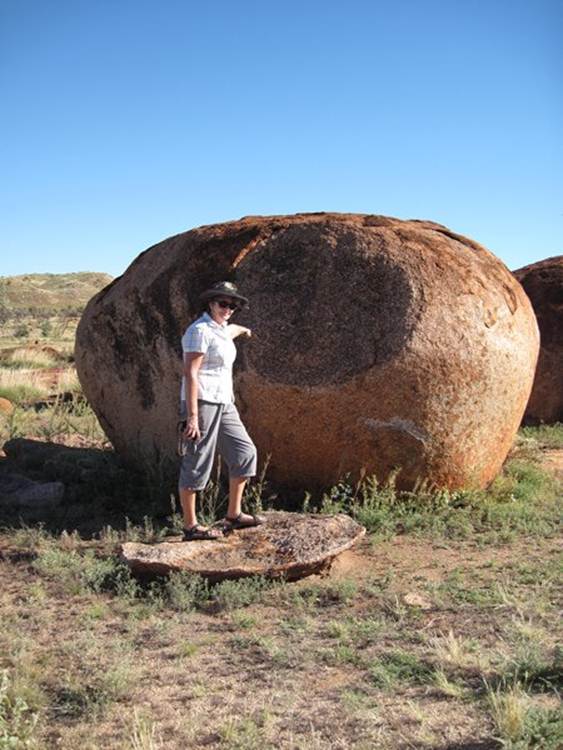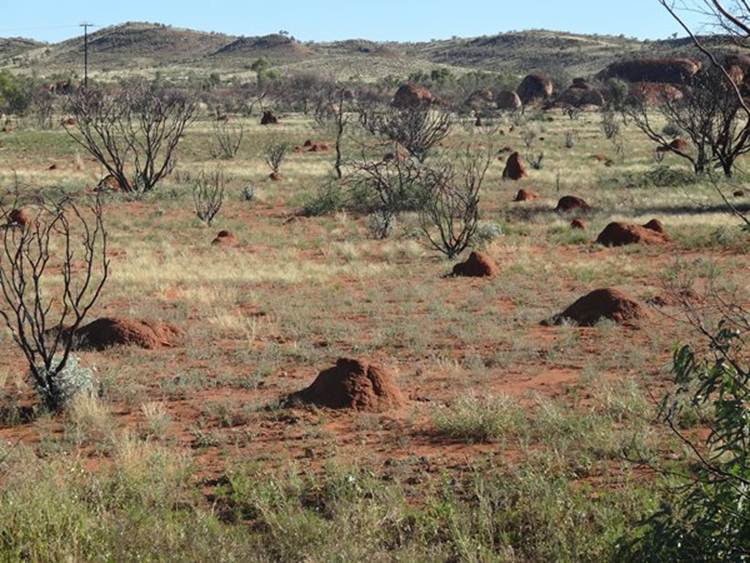Wycliffe Well - The Devils Marbles

Cockroaches were still on the floor in the shower block this morning. I should be the house mistress in a big hotel. Anyway for want of something to do we went off for a walk around the Devil’s Marbles. We should have camped here the night – it was cleaner. Anyway, these rocks are 1700 million years old, formed from intruding molten granite that cooled and hardened below a surface of sandstone at that time. As the granite cooled right angled patterns of cracks or joints formed. Wind and water eroded the overlying rocks and the granite came to be closer to the surface. Groundwater filtered down the joints and reacted with some of the minerals in the granite to form clays. This weathering was helped by a warm, humid climate. Weathering was greatest at the corners of the blocks, where more surfaces were exposed. Eventually, the overlying rocks were eroded away and the granite was exposed to the elements. The softer weathered granite around the edges of the blocks was washed away leaving boulders perched on top of one another and strewn across rock platforms. The bulk of the granite still lies beneath the surface.
Geomorphologists have come up with some interesting names for the shapes and arrangements of the granite boulders. These slab like boulders are called cheese rings – yep they do look like cheese rounds.
Paul standing beside them.
And a close up.
Pairs of boulders perched one on top of the other are called cottage loaves.
The granite is composed of feldspar, mica and quartz. The feldspar has formed really big crystals. This when weathered they tend to form clays.
Although the rocks look pretty solid, many are fractured by very fine secondary cracks (joints). Rainwater trickles into these cracks, reacts with some of the minerals in the rocks decomposing into clays, which was away leaving flakes of granite which peel away, as you can see here (called onion-skin weathering or exfoliation). You can see weathering all over the surface of the boulders as well as along the cracks. The rust colour is again from iron oxide and, apparently, indicates that weathering has occurred to a depth of about 5 cm (I didn’t know that. Did you?). Eventually all of these boulders and the rest of the granite beneath will be worn away, mainly by rain, to a sand which has a higher proportion of quartz in it that the boulders themselves.
Weathering like this has weakened some boulders along near vertical cracks so that the weight of the two halves of the boulder causes it to fall apart.
And a close up
You can see a vertical crack in the making here.
Not sure what he is up to here.
Of course, taking this photo.
Paul wanted this shot of all these youngsters on the top of one of the ‘marbles’.
Gladys was glad now of those extra few pounds.
But on the other hand that saucer just would not fly.
The landscape in places is becoming dotted with termite mounds, which are getting taller.
|
